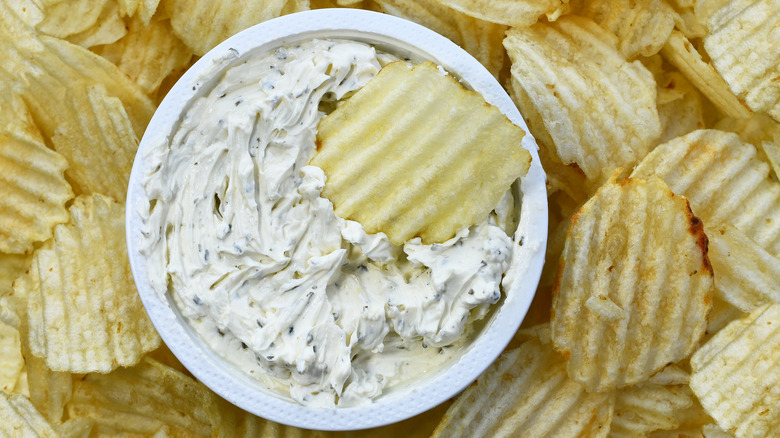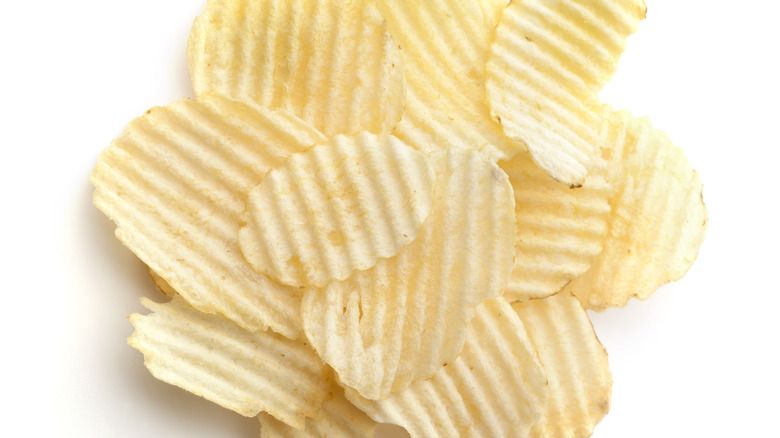Potato Chips With Ridges Are Scientifically Better For Dip
Those crinkly ridges on the surface of your potato chips are by no means accidental. Potato chips first appeared on restaurant tables in the 1850s, but the beloved snack has gone through a series of changes since its conception. Most notable, perhaps, was the addition of ridges. In 1955, a patent application for sliced corrugated potatoes to be sold under the trademark Ruffles was filed, and 56 years later, a group of food scientists set out to master the crinkly design.
Through focus groups and investigative work, the curious group of researchers discovered that hungry snackers wanted to dip potato chips into bowls of whipped feta and spicy black beans without the snacks breaking into bits. Aiming to please, the scientists aimed to develop a sturdier chip while keeping the texture of the snacks light and crunchy to meet consumer demand. Instead of increasing the thickness of each potato chip, the team looked to the ridges found in a regularly sized chip, evaluating how much stress would cause a chip to break and measuring the angles at which these crinkly snacks were cut.
A sturdier shape for snacking
One of the major challenges encountered by the scientists was the fact that the necessary manufacturing equipment didn't exist to build the chips of their design, so the group was forced to create blades and machinery that could slice the new scientifically-backed chip shape. The researchers and product inventors persisted, however, and when the enhanced potato chips were first unleashed into the American market in 2012, the product caught on. Not long after, flavored potato chip varieties like cheddar and onion and salt and vinegar hit shelves across the United Kingdom, and the sturdier chip was found in other international markets.
Thanks to the scientists' dedication to the chip-dipping initiative, snack lovers have been rewarded with potato chips that can hold their own when dipped into creamy spreads and chunky guacamole, and chips strong enough to dip and thin enough to munch are mass-produced. If you're planning on setting out a bowl of potato chips for guests to dip into the cheeseburger dip or caramelized onion dip recipe you put together, you may want to consider buying ridged chips to keep pieces from breaking apart in your homemade dip. After all, scientists made ridged chips specifically for that purpose.

